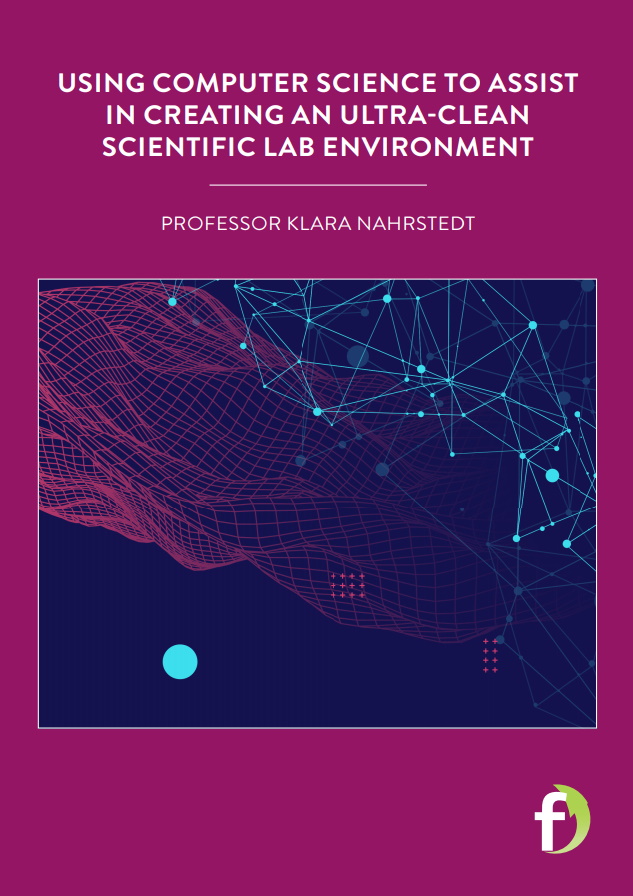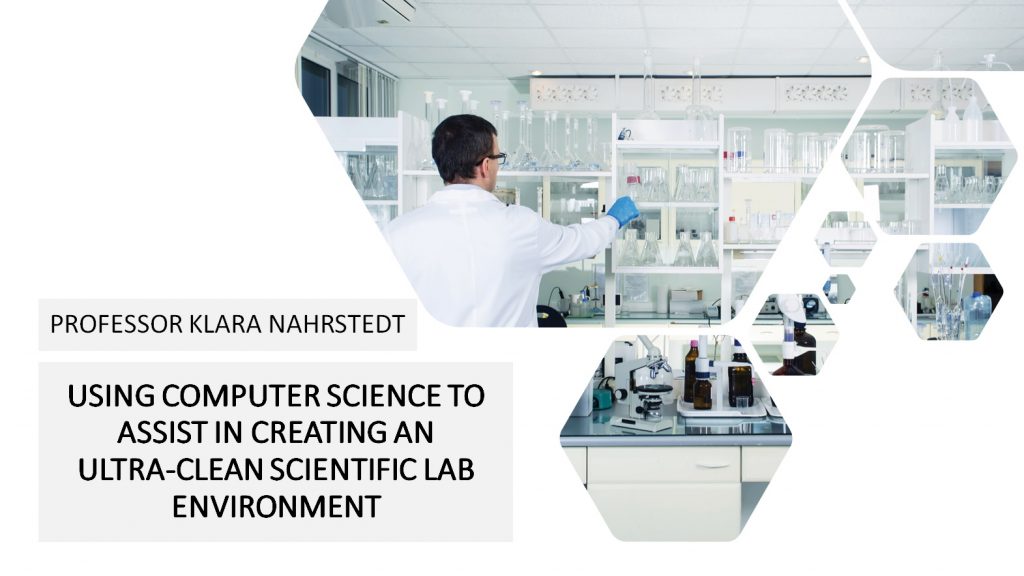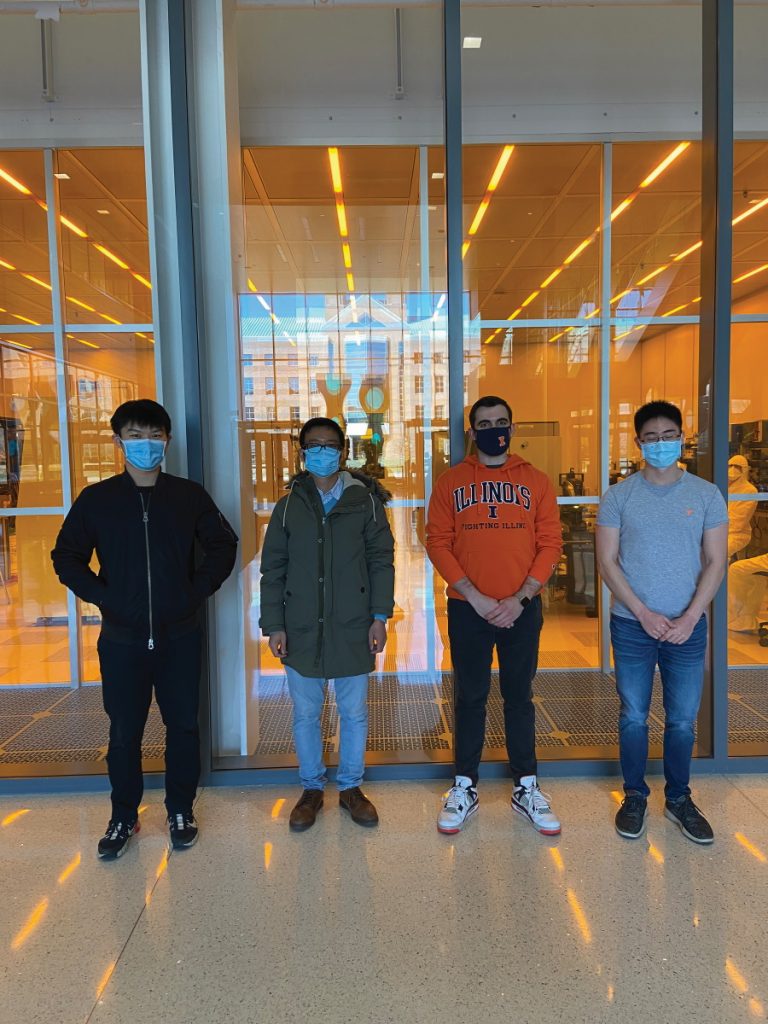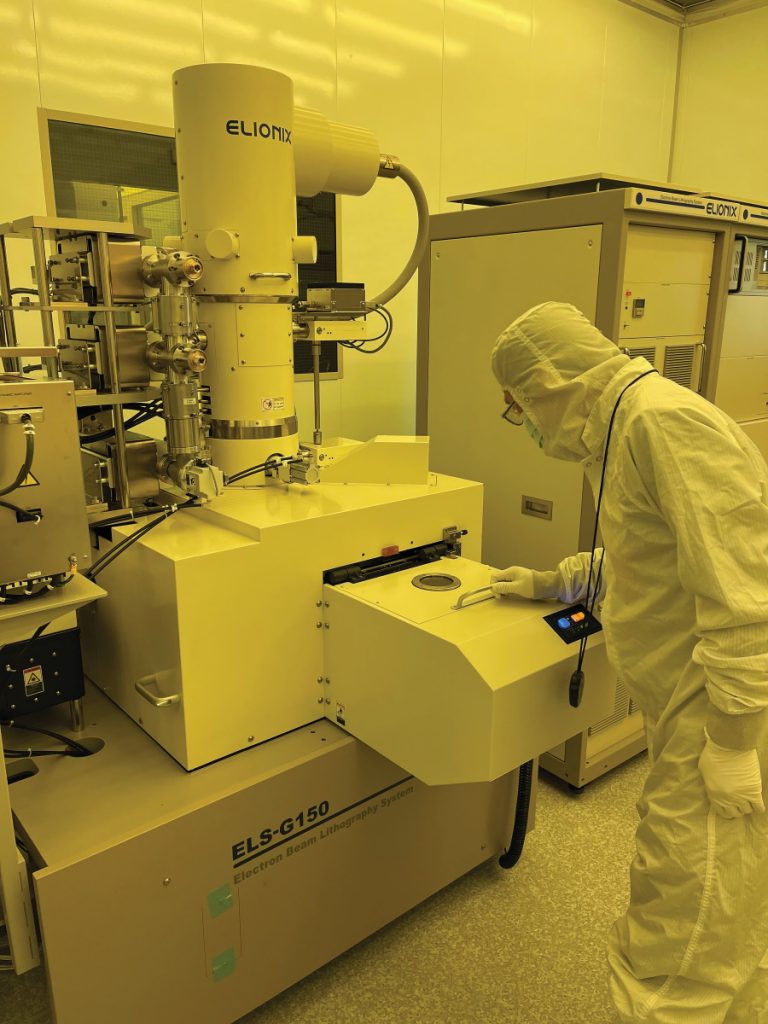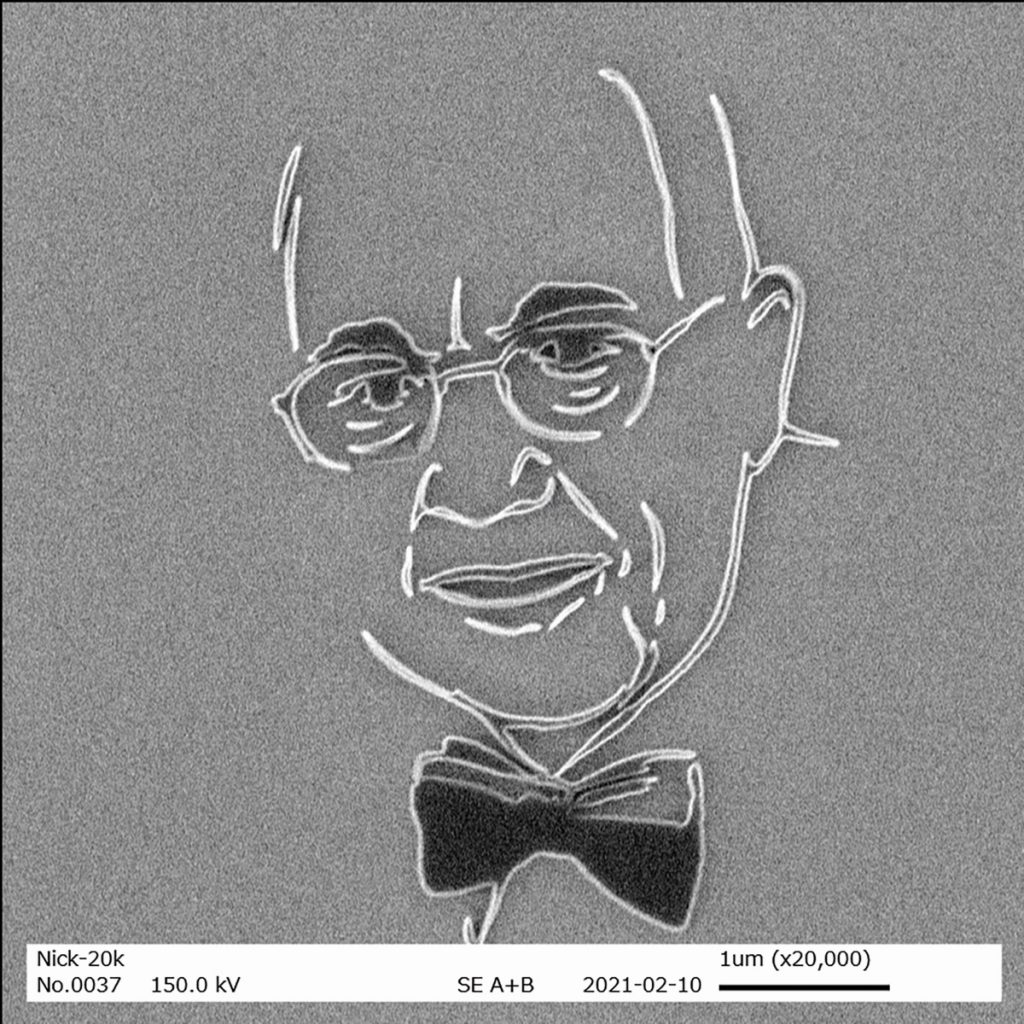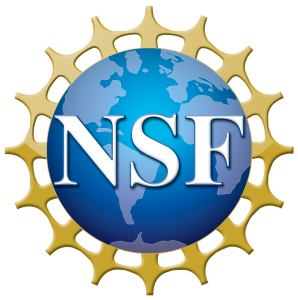Using computer science to assist in creating an ultra-clean scientific lab environment
Professor Klara Nahrstedt, of the University of Illinois at Urbana-Champaign, USA, leads the SENSELET project, which is designed to monitor, predict and inform users about micro-climate in cleanroom environments. The project enables safe research about materials and semiconductor chips in academic scientific laboratories
For some, being asked to ‘clean your room’ will be a familiar request. Perhaps you will put books on a shelf, make your bed, move dirty clothes to the wash basket and take empty mugs to the kitchen. While that would no doubt please many, there are scientists working in cleanrooms that would make any room in any house look positively filthy!
When new technology and new products using sensitive materials are being designed and developed, it is essential that the environment is clean – really clean. Clean to the extent that there is not even a mote of dust flying in the air. One product that requires such an environment is semiconductor devices, which are used in a wide range of electronics, such as computer chips in laptops, personal computers and smartphones. Hence, these semiconductor devices are an essential requirement for modern life – you (and everyone you know) use them every day, even if you do not know it.
But think of how difficult it is to create a space where not even dust can get inside. It is with this aim that Professor Klara Nahrstedt, of the Computer Science Department at the University of Illinois, Urbana-Champaign, has embarked on her current project. Klara and her team from the Coordinated Science Laboratory (CSL) (graduate students Zhe Yang and Beitong Tian) and Holonyak Micro-and-Nanotechnology Laboratory (HMNTL) (graduate students Patrick Su and Robert Kaufman, principal research engineer Dr Mark McCollum, and Electrical and Computer Engineering Professor John Dallesasse) formed the project entitled Sensory Network infrastructure for Scientific Lab Environments (SENSELET). The aim is to assist scientists in maintaining environmental control within cleanroom labs to fabricate new materials and semiconductor chips.
WHY ARE CLEANROOMS SO IMPORTANT?
If a mote of dust lands on a TV screen it hardly matters; the screen is so big that a dust particle is inconsequential. However, the experimental structures of devices in cleanrooms that the SENSELET project monitors are made on the micron to nanometre scale. A nanometre is one billionth of a metre, which means that the structures of these devices are often smaller than a single dust particle and can ruin the manufacturing process of these devices – this comes at an economic cost, but it can also lead to semiconductor chip failures and significant delays in semiconductor research. Cleanrooms help prevent this from happening by constantly filtering the air throughout the room to ensure there is virtually no dust or particles.
It is not only problems with dust that Klara and her team are working to overcome. There are other environmental parameters, such as temperature and humidity, that must be strictly controlled. This is particularly important for polymers (materials made of long, repeating chains of molecules) such as photoresist, which is a light-sensitive material that is part of a crucial process in the electronics industry. If the temperature and humidity are not kept within certain parameters, they can result in the device having different dimensions from those required, causing the device to fail and, ultimately, the whole chip to fail.
HOW IS SENSELET HELPING TO ENSURE THAT CLEANROOMS ARE EFFECTIVE?
Steps can be taken to try and ensure that the cleanrooms in which specific devices are being built operate properly. However, it is necessary to continuously monitor the room’s environment to discover whether the required conditions are being maintained. Klara and her team have put their computer science knowledge to use to build SENSELET, which can collect and track data automatically, thereby ensuring researchers can monitor and predict the environmental behaviour around scientific equipment (e.g. microscopes) in any given cleanroom. Ultimately, this facilitates a proactive rather than reactive approach and enables researchers to work around the clock without fear of damaging equipment.
WHAT ARE THE MAIN COMPONENTS OF SENSELET?
SENSELET consists of three components. “The first component is the environment monitoring module, which is composed of temperature, humidity, air-flow and water leakage sensors – and a small device we call SenseEdge to collect sensory data and push data to the remote cloud called SenseCloud,” explains Klara. “The second component is the data storage engine residing in the SenseCloud. This module runs a time series database which stores all the sensory data. The third component, residing in the SenseCloud, is the visualisation and alert module, which provides visualisation dashboards to lab administrators and sends out alerts when environmental data exceed a normal range.”
Sensors are deployed in key locations within the cleanroom to monitor the environment. In addition, they sample and track the environmental information over time so that users can access an overview of the cleanroom environmental data on a periodic basis.
WHAT CHALLENGES HAS KLARA FACED DURING THE PROJECT?
The most difficult problem has been reliability, closely followed by maintenance of sensors. “We do not have the same budget as the semiconductor companies do, so we rely on off-the-shelf commercial sensors which do not have very high reliability guarantees,” says Klara. “In addition, we do not have sufficient staffing to constantly monitor and maintain the sensory hardware and the corresponding sensing services. Hence, we need to build the system as robust as possible. To address this, we designed a watchdog mechanism to manage the sensors.”
Another issue concerns the heterogeneity of sensors, that is, the fact that sensors are of different types. Klara and the team are working to ensure SENSELET supports different sensor types easily and makes it simple to add or replace sensors. The final challenge is related to time-sensitive data analysis – it is essential that SENSELET can trigger warnings at a time that is most beneficial. Klara and the team have been working to shorten the time between the occurrence of an abnormal sensory event and the alert. The aim is to create a system that can predict future abnormal events based on the current situation; the benefits to manufacturers of electronic equipment would be enormous.
WHAT HAVE BEEN THE KEY SUCCESSES OF THE PROJECT?
SENSELET has been used within the University of Illinois, Urbana-Champaign, where Klara is based, and provided quantifiable data showing that the humidity control is not within specifications. The system has also identified other environmental problems across a range of academic scientific locations within the HMNTL. “A dashboard has been created to notify users of the current temperature and humidity deviations, measured inside the cleanroom, as well as historical data being tracked every minute,” explains Klara. “This data has proved useful in helping cleanroom lab managers and researchers adjust their management and scientific processes. Overall, SENSELET also demonstrated a low-cost, high performance sensory network capable of micro-climate monitoring and being deployed in academic scientific environments, such as cleanrooms for micro-climate monitoring.”
There is still more work to be done, but SENSELET is already proving its worth – and further advances in the technology will save a tremendous amount of time, effort and money. It is fitting that Klara and her graduate students are putting their computer science expertise to use to enable the materials and semiconductor device fabrication research and development environment that will advance the field of computing!
Reference
https://doi.org/10.33424/FUTURUM137
When new technology and new products using sensitive materials are being designed and developed, it is essential that the environment is clean – really clean. Clean to the extent that there is not even a mote of dust flying in the air. One product that requires such an environment is semiconductor devices, which are used in a wide range of electronics, such as computer chips in laptops, personal computers and smartphones. Hence, these semiconductor devices are an essential requirement for modern life – you (and everyone you know) use them every day, even if you do not know it.
But think of how difficult it is to create a space where not even dust can get inside. It is with this aim that Professor Klara Nahrstedt, of the Computer Science Department at the University of Illinois, Urbana-Champaign, has embarked on her current project. Klara and her team from the Coordinated Science Laboratory (CSL) (graduate students Zhe Yang and Beitong Tian) and Holonyak Micro-and-Nanotechnology Laboratory (HMNTL) (graduate students Patrick Su and Robert Kaufman, principal research engineer Dr Mark McCollum, and Electrical and Computer Engineering Professor John Dallesasse) formed the project entitled Sensory Network infrastructure for Scientific Lab Environments (SENSELET). The aim is to assist scientists in maintaining environmental control within cleanroom labs to fabricate new materials and semiconductor chips.
WHY ARE CLEANROOMS SO IMPORTANT?
If a mote of dust lands on a TV screen it hardly matters; the screen is so big that a dust particle is inconsequential. However, the experimental structures of devices in cleanrooms that the SENSELET project monitors are made on the micron to nanometre scale. A nanometre is one billionth of a metre, which means that the structures of these devices are often smaller than a single dust particle and can ruin the manufacturing process of these devices – this comes at an economic cost, but it can also lead to semiconductor chip failures and significant delays in semiconductor research. Cleanrooms help prevent this from happening by constantly filtering the air throughout the room to ensure there is virtually no dust or particles.
It is not only problems with dust that Klara and her team are working to overcome. There are other environmental parameters, such as temperature and humidity, that must be strictly controlled. This is particularly important for polymers (materials made of long, repeating chains of molecules) such as photoresist, which is a light-sensitive material that is part of a crucial process in the electronics industry. If the temperature and humidity are not kept within certain parameters, they can result in the device having different dimensions from those required, causing the device to fail and, ultimately, the whole chip to fail.
HOW IS SENSELET HELPING TO ENSURE THAT CLEANROOMS ARE EFFECTIVE?
Steps can be taken to try and ensure that the cleanrooms in which specific devices are being built operate properly. However, it is necessary to continuously monitor the room’s environment to discover whether the required conditions are being maintained. Klara and her team have put their computer science knowledge to use to build SENSELET, which can collect and track data automatically, thereby ensuring researchers can monitor and predict the environmental behaviour around scientific equipment (e.g. microscopes) in any given cleanroom. Ultimately, this facilitates a proactive rather than reactive approach and enables researchers to work around the clock without fear of damaging equipment.
WHAT ARE THE MAIN COMPONENTS OF SENSELET?
SENSELET consists of three components. “The first component is the environment monitoring module, which is composed of temperature, humidity, air-flow and water leakage sensors – and a small device we call SenseEdge to collect sensory data and push data to the remote cloud called SenseCloud,” explains Klara. “The second component is the data storage engine residing in the SenseCloud. This module runs a time series database which stores all the sensory data. The third component, residing in the SenseCloud, is the visualisation and alert module, which provides visualisation dashboards to lab administrators and sends out alerts when environmental data exceed a normal range.”
Sensors are deployed in key locations within the cleanroom to monitor the environment. In addition, they sample and track the environmental information over time so that users can access an overview of the cleanroom environmental data on a periodic basis.
WHAT CHALLENGES HAS KLARA FACED DURING THE PROJECT?
The most difficult problem has been reliability, closely followed by maintenance of sensors. “We do not have the same budget as the semiconductor companies do, so we rely on off-the-shelf commercial sensors which do not have very high reliability guarantees,” says Klara. “In addition, we do not have sufficient staffing to constantly monitor and maintain the sensory hardware and the corresponding sensing services. Hence, we need to build the system as robust as possible. To address this, we designed a watchdog mechanism to manage the sensors.”
Another issue concerns the heterogeneity of sensors, that is, the fact that sensors are of different types. Klara and the team are working to ensure SENSELET supports different sensor types easily and makes it simple to add or replace sensors. The final challenge is related to time-sensitive data analysis – it is essential that SENSELET can trigger warnings at a time that is most beneficial. Klara and the team have been working to shorten the time between the occurrence of an abnormal sensory event and the alert. The aim is to create a system that can predict future abnormal events based on the current situation; the benefits to manufacturers of electronic equipment would be enormous.
WHAT HAVE BEEN THE KEY SUCCESSES OF THE PROJECT?
SENSELET has been used within the University of Illinois, Urbana-Champaign, where Klara is based, and provided quantifiable data showing that the humidity control is not within specifications. The system has also identified other environmental problems across a range of academic scientific locations within the HMNTL. “A dashboard has been created to notify users of the current temperature and humidity deviations, measured inside the cleanroom, as well as historical data being tracked every minute,” explains Klara. “This data has proved useful in helping cleanroom lab managers and researchers adjust their management and scientific processes. Overall, SENSELET also demonstrated a low-cost, high performance sensory network capable of micro-climate monitoring and being deployed in academic scientific environments, such as cleanrooms for micro-climate monitoring.”
There is still more work to be done, but SENSELET is already proving its worth – and further advances in the technology will save a tremendous amount of time, effort and money. It is fitting that Klara and her graduate students are putting their computer science expertise to use to enable the materials and semiconductor device fabrication research and development environment that will advance the field of computing!
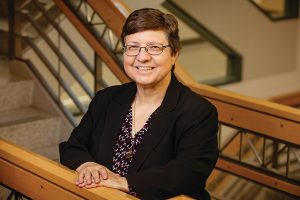 PROFESSOR KLARA NAHRSTEDT
PROFESSOR KLARA NAHRSTEDT
Grainger Distinguished Chair in Engineering Professor, Computer Science Department, University of Illinois at Urbana-Champaign, USA
FIELD OF RESEARCH: Computer Science
RESEARCH PROJECT: Developing an affordable sensing infrastructure called SENSELET that can be used in academic cleanrooms. The outputs ensure researchers can maintain a pristine environment that is perfectly suited to creating, building and developing extremely important materials and devices for future computing technologies.
FUNDER: This work was supported by the National Science Foundation (NSF) under the award number 1827126. The contents are solely the responsibility of the authors and do not necessarily represent the official view of NSF.
 PROFESSOR KLARA NAHRSTEDT
PROFESSOR KLARA NAHRSTEDTGrainger Distinguished Chair in Engineering Professor, Computer Science Department, University of Illinois at Urbana-Champaign, USA
FIELD OF RESEARCH: Computer Science
RESEARCH PROJECT: Developing an affordable sensing infrastructure called SENSELET that can be used in academic cleanrooms. The outputs ensure researchers can maintain a pristine environment that is perfectly suited to creating, building and developing extremely important materials and devices for future computing technologies.
FUNDERS: This work was supported by the National Science Foundation (NSF) under the award number 1827126. The contents are solely the responsibility of the authors and do not necessarily represent the official view of NSF.
ABOUT COMPUTER SCIENCE
Computer science is an extraordinarily broad field that has no definitive pathway. Irrespective of whether you want to enter academia to further research in the field, work in industry to realise the applications of technology, or even have a general interest in your spare time, there are some fundamentals and – as with so many sciences – mathematics and physics will stand you in good stead.
Klara is a computer scientist who is currently working on the development of sensory network infrastructure that will help scientists in laboratories research, build, develop and manufacture materials and semiconductor devices that have near-limitless benefits. This pathway should help demonstrate how there is no single route into the field of computer science and that the world really is your oyster with such a broad scientific field. In many ways, computer science is what you want to make of it!
WHAT DOES KLARA FIND MOST REWARDING AND CHALLENGING ABOUT THE FIELD?
Computer science is extremely rewarding because through it, you are able to acquire knowledge and skills that impact many people in the current digital transformation era. However, it is also challenging! “One has to have patience and perseverance when learning new programming languages, tools, coding frameworks, designing new digital systems under constantly changing hardware and software technologies, and understanding user communities to be easily usable and inclusive for different communities,” explains Klara.
In the future, Klara wants to develop trustworthy, latency-aware and sustainable large-scale distributed cyber-physical systems that interconnect users and machines and give them extended sensing, decision making, reasoning and actuating capabilities. This will be challenging but, once achieved, very rewarding.
WHAT ISSUES WILL THE NEXT GENERATION OF COMPUTER SCIENTISTS FACE?
Klara thinks there will be several issues, such as the security and privacy of distributed computing technologies; ethical and biases issues when coding digital systems for broad audiences; and the low-cost sustainability of digital technologies over years. “It is not possible to replace smart meters every year like we do with our smartphones,” says Klara. “One of the main challenges for future computer scientists is to find a way of making computer systems that last longer and do not become a security threat.”
EXPLORE A CAREER IN COMPUTER SCIENCE
• Computerscience.org is a brilliant resource for anybody considering a career in the field. It is difficult to think of a question or concern you might have that is not covered somewhere on this site: https://www.computerscience.org/
• This article from The Guardian was published almost a decade ago, but the resources it points to are still so useful: https://www.theguardian.com/teacher-network/2012/jan/24/top-ten-computer-science-teaching-resources
PATHWAY FROM SCHOOL TO COMPUTER SCIENCE
Klara recommends taking mathematics, physics and some other science classes to become accustomed to rigorous thinking and reasoning about science and related phenomena. English will always serve you well because communication skills are so important when presenting findings. Klara believes you should also consider learning another language – scientists often need to travel around the world to share knowledge and knowing another language can be handy! You should think about taking simple computer science classes as soon as possible to become well-versed in computational thinking.
Relevant degree subjects include mathematics, computer science and engineering. Computer science is such a broad subject that there are a wide range of routes into the field – it really depends on which direction you want to head after your studies. “There are many aspects of computer science students should try to understand, including distributed systems, networks, operating systems, computer architecture, security, privacy, programming languages and software engineering,” says Klara. “There is also theoretical background, including algorithms, data mining, AI algorithms, control theory, optimisation theory and statistical reasoning.”
https://www.prospects.ac.uk/careers-advice/what-can-i-do-with-mydegree/computer-science
HOW DID KLARA BECOME A COMPUTER SCIENTIST?
As a child, I was interested in mathematics, physics, foreign languages, literature and history. As an adult, I continue to be interested in all of these subjects and more!
My parents were a major inspiration throughout my childhood. Also, my mathematics middle-school teacher and my mathematics and physics high-school teachers inspired me to become a scientist. Without all of these, it is difficult to imagine what I might have been doing today!
There are many attributes that I consider have made me successful as a scientist. The first is curiosity – wanting to understand how things work is at the centre of many scientists’ motivations and I am no different. There is the need to be patient, because sometimes learning something can take time! I also like to dig deeper into subjects and find reasons behind scientific phenomena (even if none are forthcoming). Then, there is perseverance that helps me to keep going, even when the solutions to a problem are not immediately obvious. Finally, having respect for other people’s expertise and their valuable input is extremely important.
The first step to overcoming obstacles is always working to understand what the cause of the obstacle is. I try to achieve this by analysing the situation if I have the knowledge and means to overcome the challenge but, if not, I will actively ask for help and collaboration from those around me. Then, there is the option of trying to raise funds if the problem is big enough to warrant its own research project!
My proudest career achievements are numerous. I love that I have helped many PhD students and master’s students graduate and become highly valuable scientists and engineers in society. There is also a major element of pride in hearing from former undergraduate students who took my classes and acknowledge that it was my classes that had a positive impact on their professional career. Seeing dancers in places around the world dance together in real time inside joint immersive virtual spaces, created by our tele-immersive project, TEEVE (Teleimmersion for Everybody), was also very rewarding! Next, there is seeing semiconductor researchers in cleanroom laboratories use our data and sensory cyber-infrastructures, such as 4CeeD and SENSELET, for their research that helps them speed up their scientific experiments and gain new insights and knowledge. Finally, seeing many of my research results having an impact throughout the computing industry through my former students, makes everything I do worthwhile.
KLARA’S TOP TIPS
01 You will acquire the rigour of learning during your formative years at school and college, but it is important to try and maintain curiosity throughout this period, even when it might seem difficult.
02 Be conscious of the different social and technical tools you can learn that will prepare you for solving societal problems; there are many new challenges that will arise from the digital transformation of all disciplines and to overcome these science needs people who have considered the issues.
03 The next generation of computer scientists and engineers will need to understand other scientific, engineering and social domains where computing is embedded; learn to speak the languages of other domains; respect others and be willing to work in teams; and have the ethical skills to develop solutions that do not harm others.
Write it in the comments box below and Klara will get back to you. (Remember, researchers are very busy people, so you may have to wait a few days.)

